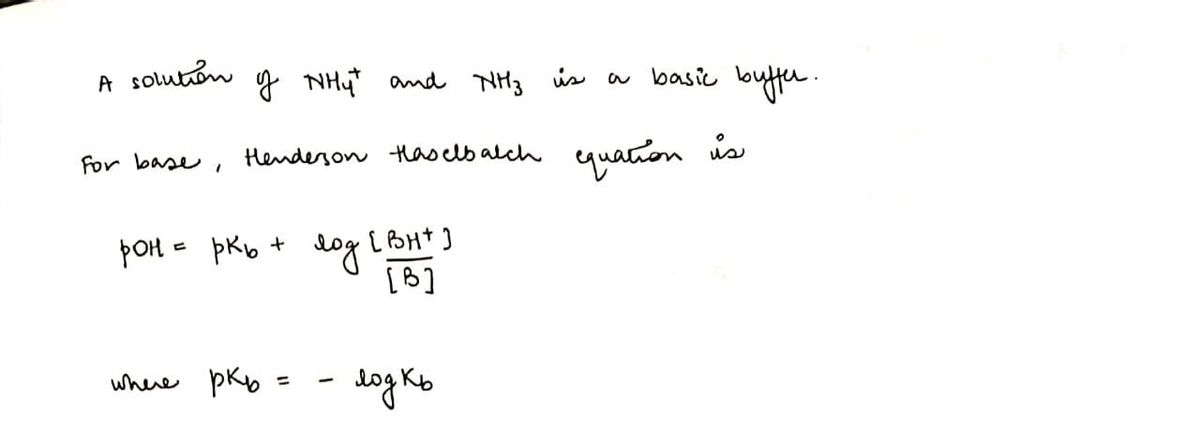a) If there are 0.150 moles NH4* and 0.250 moles NH3 in 0.1000 L of the buffer, then what is the initial pH of the buffer? pH initial %3D b) If 0.090 moles HCl in 0.0100 L of solution is added to the 0.1000 L of buffer, what is the final pH of the new solution? pH final %3D c) What is the change in pH? ApH %3D
a) If there are 0.150 moles NH4* and 0.250 moles NH3 in 0.1000 L of the buffer, then what is the initial pH of the buffer? pH initial %3D b) If 0.090 moles HCl in 0.0100 L of solution is added to the 0.1000 L of buffer, what is the final pH of the new solution? pH final %3D c) What is the change in pH? ApH %3D
Chemistry: Matter and Change
1st Edition
ISBN:9780078746376
Author:Dinah Zike, Laurel Dingrando, Nicholas Hainen, Cheryl Wistrom
Publisher:Dinah Zike, Laurel Dingrando, Nicholas Hainen, Cheryl Wistrom
Chapter2: Analyzing Data
Section: Chapter Questions
Problem 113A
Related questions
Question
Boxes a-c

Transcribed Image Text:Acid
Ka
12 x 10
Chlorous Acid
Hydrofluoric 7.2 x 10
Acid
4
4.0 x 10
Nitrous Acid
4
1.4 x 10
Lactic Acid
4
6.4 x 10
Benzoic Acid
1.8 x 10
Acetic Acid
5.
Hypochlorous 3.5 x 10
8.
Acid
Ammonium 5.6 x 10
10
lon

Transcribed Image Text:Enter the number only (no units)
• Do not leave any spaces
• Include the sign if your answer is negative (not necessary for
positive values)
• Use a leading zero before the decimal when necessary
• Report your number to 2 decimal places (regardless of the
significant figures)
• Correctly round your answer to the 2nd decimal place (margin
of allowed error is only + 0.01, so always use un-rounded
numbers in your calculations). If the last digits are zeros they
will not display once you click away, but the answer will still
be marked correct.
Examples: 12.34 or -0.56
a) If there are 0.150 moles NH4* and 0.250 moles NH3 in
0.1000 L of the buffer, then what is the initial pH of the buffer?
pH initial
b) If 0.090 moles HCl in 0.0100 L of solution is added to the
0.1000 L of buffer, what is the final pH of the new solution?
pH final
c) What is the change in pH?
ApH
%3D
Expert Solution
Step 1

Step by step
Solved in 3 steps with 3 images

Recommended textbooks for you

Chemistry: Matter and Change
Chemistry
ISBN:
9780078746376
Author:
Dinah Zike, Laurel Dingrando, Nicholas Hainen, Cheryl Wistrom
Publisher:
Glencoe/McGraw-Hill School Pub Co

Introductory Chemistry: A Foundation
Chemistry
ISBN:
9781337399425
Author:
Steven S. Zumdahl, Donald J. DeCoste
Publisher:
Cengage Learning


Chemistry: Matter and Change
Chemistry
ISBN:
9780078746376
Author:
Dinah Zike, Laurel Dingrando, Nicholas Hainen, Cheryl Wistrom
Publisher:
Glencoe/McGraw-Hill School Pub Co

Introductory Chemistry: A Foundation
Chemistry
ISBN:
9781337399425
Author:
Steven S. Zumdahl, Donald J. DeCoste
Publisher:
Cengage Learning


Chemistry & Chemical Reactivity
Chemistry
ISBN:
9781337399074
Author:
John C. Kotz, Paul M. Treichel, John Townsend, David Treichel
Publisher:
Cengage Learning


Introductory Chemistry: An Active Learning Approa…
Chemistry
ISBN:
9781305079250
Author:
Mark S. Cracolice, Ed Peters
Publisher:
Cengage Learning